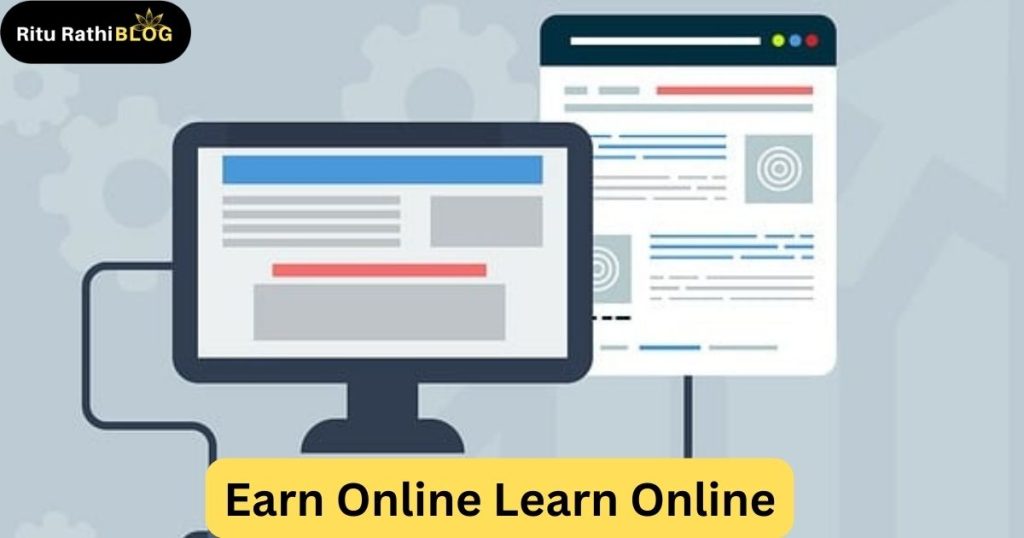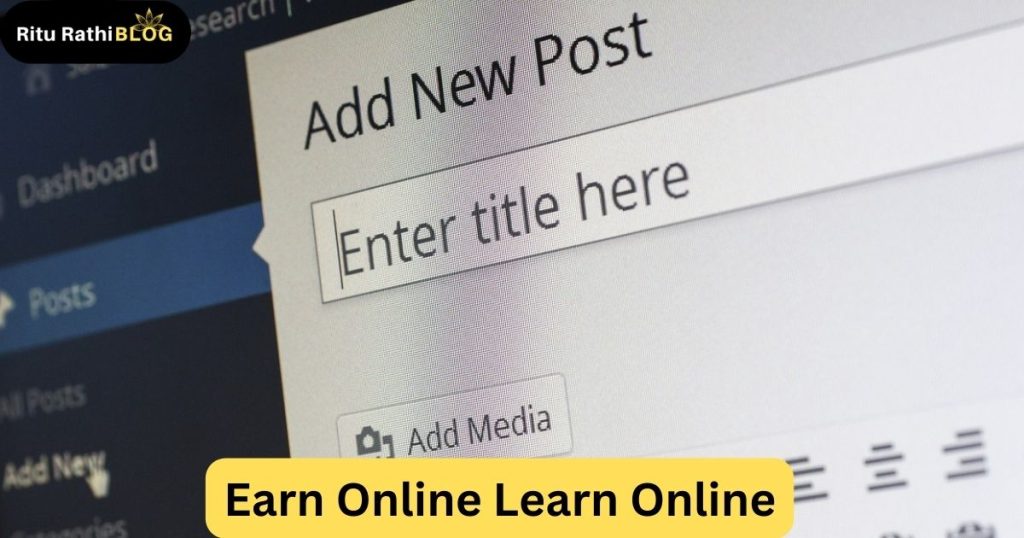Blogging has become a popular pastime and a powerful tool for individuals and businesses to connect with their audiences, share their experiences, and express their thoughts and ideas. With the rise of digital communication, start a blog in 2023 has never been easier.
However, for beginners, the process of starting a blog can seem daunting. This guide aims to simplify the process and provide a step-by-step guide on “How to start a Blog in 2023? for Beginners.”
Whether you’re looking to start a blog, a blog for your business, or a platform to share your knowledge and expertise, this guide will help you get started.
“Start a blog” can be broken down into these simple 6 steps:

Let’s understand one by one :
Choose a blogging platform to Start a Blog:
Popular options include WordPress, Blogger, Wix, and SquareSpace.
A blogging platform is a software or service that makes it easy for you to create and manage a blog. Here’s a brief explanation of the popular options you mentioned:
- WordPress: WordPress is an open-source platform that powers over 40% of all websites on the internet. It offers a vast array of customization options and plugins, making it a great choice for bloggers who want a lot of control over the look and functionality of their blog. There are two options for using WordPress: self-hosted (you’ll need to purchase web hosting) or WordPress.com (hosted by WordPress).
- Blogger: Blogger is a free, easy-to-use platform owned by Google. It’s a great option for beginners who just want to quickly get started without worrying about technical setup. However, it has fewer customization options compared to other platforms.
- Wix: Wix is a website builder that offers a blogging platform as one of its features. It’s known for its drag-and-drop interface and user-friendly design options. Wix offers both free and paid plans, with the paid plans offering more features and storage.
- Squarespace: Squarespace is a paid platform that combines website building and blogging into one. It’s known for its sleek, modern designs and easy-to-use interface. It also offers a variety of e-commerce options for bloggers who want to sell products or services directly from their blog.
Ultimately, the choice of which platform to use will depend on your goals, budget, and technical ability. Consider the level of customization you want, how much control you want over your blog’s appearance and functionality, and how much you’re willing to spend.
To choose a Blog niche is equally important to Start a Blog in 2023. Read our Blog about How to choose niche in 2023 to start earning from 2nd month of your blogging career

Get a domain name and web hosting:
A domain name is your blog’s unique address on the internet. It’s the web address that people will type into their browser to find your blog. For example, the domain name for Google is www.google.com.
A domain registrar is a company that sells domain names. You’ll need to choose and purchase a domain name from a registrar, such as GoDaddy or Namecheap. Domain names typically cost around $10-$15 per year.
Web hosting is a service that stores the files and data that make up your blog. When someone types your domain name into their browser, the browser accesses your blog’s files from the web hosting server. This is how your blog is displayed on the internet.
To start a blog you can purchase web hosting and a domain name from different companies, or you can buy them together from a single provider. There are many web hosting companies to choose from, with a range of plans and prices to suit different needs. Some popular options include Bluehost, HostGator, and SiteGround.
In summary, to start a blog a domain name is the address of your blog on the internet, and web hosting is where your blog’s files are stored and served to visitors. You can purchase both separately or together, and there are many options available to suit different needs and budgets.

Design your blog :
Designing your blog is also an important step to start a blog, it involves choosing a theme or template that sets the overall look and feel of your blog, and then customizing it to make it your own.
A theme or template is a pre-designed set of styles and layouts that determine how your blog will look. Most blogging platforms come with a variety of free and paid themes to choose from, and many also allow you to upload custom themes. When choosing a theme, consider factors such as the layout, color scheme, font styles, and other design elements, and choose one that aligns with your brand and the style you want for your blog.
Once you have chosen a theme, you can start customizing it to match your personal brand and style. This might involve adding your own logo, images, and branding elements such as colors and fonts. You can also add widgets and plugins that add new functionality to your blog, such as social media buttons, search bar, and more.
In summary, in this step to start a blog, design of your blog is an important factor in how your blog will look and feel to your visitors. Choose a theme or template that matches your style and customize it with your own branding and images to make it your own.

Write and publish your first blog post:
Writing and publishing your first blog post is an exciting step in creating your blog. Here are some tips to help you write a great post:
- Choose a topic: Pick a topic that you’re passionate about and knowledgeable about. Write about something that you’re excited to share with your audience. It could be a personal story, a review of a product or service, or an opinion on a current event.
- Plan your post: Start by outlining the structure of your post, including the main points you want to cover and the information you want to include. This will help you stay organized and focused as you write.
- Write the post: Write your post in a conversational tone, as if you’re speaking to a friend. Use clear, concise language and break up the text into short paragraphs and subheadings to make it easy to read.
- Include multimedia: Adding images, videos, and other multimedia elements can help to enhance your content and keep readers engaged. Make sure to choose high-quality images and videos that are relevant to your post.
- Edit and proofread: Once you’ve finished writing your post, take the time to read through it and make any necessary revisions. Check for spelling and grammar errors and ensure that your post flows well and makes sense.
- Publish: When you’re ready to publish, log into your blogging platform and follow the steps to publish your post. You can also set a date and time for your post to be published in the future, if you prefer.
In summary, writing and publishing your first blog post is a fun and exciting step in creating your blog. Choose a topic you’re passionate about, plan and write your post, add multimedia elements, and edit and proofread before publishing.

Promote your blog:
Here are some of the best ways to promote your blog:
- Utilize social media platforms: Share your blog posts on social media, engage with your followers and participate in relevant online communities.
- Search Engine Optimization (SEO): Optimize your blog posts for search engines by using relevant keywords, meta descriptions, and header tags.
- Guest posting: Reach a new audience by writing guest posts on other relevant blogs or websites.
- Email marketing: Build an email list and send out newsletters to promote your blog and latest posts.
- Collaborate with other bloggers and influencers: Partner with others in your niche to reach a larger audience.
- Paid advertising: Utilize paid advertising options like Google AdWords or Facebook Ads to reach a wider audience.
- Content promotion and distribution: Utilize content promotion platforms like Outbrain or Taboola to distribute your content and reach new audiences.
- Utilize community involvement: Participate in online communities related to your niche and engage with your target audience.
Remember, it’s important to have a consistent content strategy and consistently engage with your audience in order to effectively promote your blog.

Monetize your blog:
Monetizing your blog is the last and final step of “start a blog”, it involves generating revenue from your blog through various methods. Here are some of the most common ways to monetize a blog:
- Advertising: You can sell advertising space on your blog to other businesses. This can include banner ads, sponsored posts, or product reviews.
- Sponsored Posts: You can receive payment for writing posts that promote a product or service.
- Affiliate Marketing: You can earn a commission by promoting other people’s products and services on your blog and earning a referral fee for any sales that result.
- Digital products: You can sell digital products, such as ebooks, courses, or memberships, directly from your blog.
- Services: If you have a specific skill or expertise, you can offer your services through your blog, such as consulting or coaching.
It’s important to keep in mind that monetizing your blog takes time and effort. It’s also important to ensure that any monetization methods you choose align with the values and goals of your blog and audience. Additionally, it’s crucial to disclose any sponsored content or affiliate relationships to maintain transparency and credibility with your audience.

Conclusion :
Starting a blog can be challenging, but it is not impossible. If you are also planning to start a blog, this article will guide you on how to earn online through blogging in 2023. Don’t forget to check out our other blog posts on e-commerce, affiliate marketing, and influencer marketing to gain more insights.
So what are you waiting for? Start a blog today and take the first step towards building your online presence. Remember, starting a blog requires dedication and consistent effort. But don’t let that discourage you – start a blog is a rewarding experience that can lead to many opportunities.
So, if you’re ready to start a blog, take the leap and begin your journey. With hard work and determination, you can create a successful blog that connects with your audience and helps you achieve your goals.
****Thanks for reading and enjoy reading our recent blogs****
Recent Blogs
- Popular Hostinger Hosting Pricing and Complete Review
- Discover the Top 7 Hosting Providers in the USA
- Best PebbleHost Server: For High-Performance Minecraft Gaming
- 15 Reasons: Why is consistency in content creation is important?
- 6 Best End of Tenancy Cleaning in London
Disclaimer :
“The information provided on this blog is for informational purposes only and is not intended as professional advice. The author of this blog makes no representations as to the accuracy or completeness of any information on this site or found by following any link on this site. The author will not be liable for any errors or omissions in this information nor for the availability of this information.
The author will not be liable for any losses, injuries, or damages from the display or use of this information. The opinions expressed on this blog are purely the author’s own and do not represent the views of any company or organization. This blog may contain affiliate links or sponsored content, and the author may receive compensation for any purchases made through these links. Please be aware that any product endorsements or sponsored content will be clearly marked as such.”

A domain registrar is a company that sells domain names. You’ll need to choose and purchase a domain name from a registrar, such as GoDaddy or Namecheap. Domain names typically cost around $10-$15 per year.